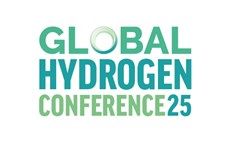Investing for the future
Published by Ellie Brosnan,
Editorial Assistant
Global Hydrogen Review,
Hydrogen is one of the most versatile gases in the world. Industries ranging from food processing to steel production to transportation all rely upon it, either as a key component of a larger process or as an end product itself. Its utility makes it a strong contender to replace other energy sources as a greener, more sustainable option.
Despite its many benefits, hydrogen is not always an easy substance to work with. To process it effectively, industrial hydrogen and heavy-duty transportation systems require high-quality, specialised components. Due to hydrogen’s volatility, handling systems must deliver leak-tight performance to ensure safety for technicians as well as end users. In addition, to remain a viable option, these systems must last for years or even decades, so designing with the proper components is crucial to ensuring system longevity.
Valves are especially instrumental in controlling the flow of hydrogen from one location to another. Specifying the right type of valves within the system’s design can mean the difference between safe, efficient, and effective hydrogen delivery vs operations that could put technicians and end users at risk.
How hydrogen differs from other industrial gases
Hydrogen is the simplest element, having only one proton and one electron. In addition, it also comprises the smallest molecules in the universe. Keeping them contained presents a difficult challenge, particularly because any leak during transport can endanger users. This is especially true in vehicle fuel applications, where end users are typically not accustomed to working with hydrogen and may not understand the related risks.
Hydrogen’s small molecules also pose a threat to system components themselves. Using lower-quality stainless steel components can encourage a process called hydrogen embrittlement, where the molecules embed into the surrounding metal. Over time, this infusion can lead to fissures that significantly weaken the component, potentially resulting in system failure. To avoid these problems, system designers should take measures to ensure that components are made from only high-quality stainless steel.
Hydrogen exposure can also have negative effects on elastomers, particularly in hydrogen-rich environments such as fuel cells, hydrogen storage systems, or industrial processes. Elastomers are more permeable to hydrogen than metals, meaning hydrogen can diffuse through them relatively easily. Over time, this can lead to swelling or blistering, especially under cyclic pressure conditions.
Subscribe today for the full article and many more in our free issue of Global Hydrogen Review Summer 2025.
Read the article online at: https://www.globalhydrogenreview.com/special-reports/18062025/investing-for-the-future/
You might also like
PowerUP secures €10 million in funding
PowerUP has closed a €10 million Series A funding round to accelerate the manufacturing and commercialisation of hydrogen-powered generators.


